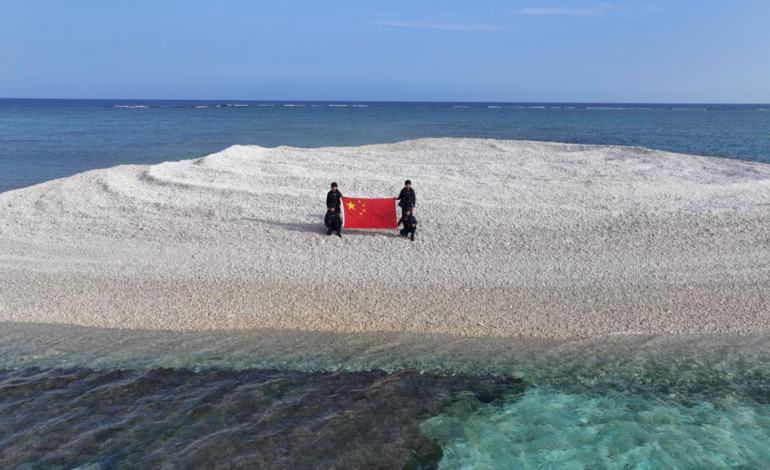Philippines Denies Reports of Chinese Seizure of Disputed South China Sea Reef

The Philippine government has dismissed reports that China has seized control of a disputed reef in the South China Sea, amid rising tensions in one of the world’s busiest shipping routes.
The dispute centers around Sandy Cay, a cluster of sandbars located near major military outposts controlled by both China and the Philippines. In recent days, both nations’ personnel have planted flags on Sandy Cay, highlighting their competing claims. While Chinese state media reported that coast guard personnel had landed on the sandbars in mid-April to exercise what they described as “sovereign jurisdiction,” the Philippine National Security Council said there was no evidence of Chinese occupation.
“We found no evidence of alleged Chinese occupation,” Jonathan Malaya, Assistant Director of the Philippines’ National Security Council, said on Monday.
He added that a Philippine team visited the sandbars on Sunday and found them unoccupied.
The South China Sea is a critical maritime thoroughfare, accounting for about a third of global trade. China’s sweeping claims overlap with those of several neighbors, including the Philippines, Malaysia, Vietnam, and Taiwan. Sandy Cay’s strategic significance stems from the fact that parts of it remain above water at high tide, which under international maritime law entitles it to a 12-nautical-mile territorial sea.
Tensions over Sandy Cay come at a sensitive time as the Philippines hosts the annual “Balikatan” military exercises with the United States, an event involving around 9,000 American and 5,000 Filipino troops, alongside smaller contingents from Australia and Japan. China, reacting to the drills, has deployed naval assets, including sailing an aircraft carrier near the Luzon Strait between Taiwan and the Philippines.
Philippine military officials emphasized that the recent events demonstrate growing competition in the region.
“It only means that we have probably done something worthy of their attention,” said Philippine Army Brig. Gen. Michael Logico in reference to China’s reactions.
Sandy Cay has been a flashpoint before. A 2017 standoff saw the Philippines attempt to build shelters for fishermen, a move that drew Chinese protests and was eventually halted by then-President Rodrigo Duterte to maintain ties with Beijing.
Analysts suggest the latest developments reflect China’s ongoing efforts to reinforce its maritime claims.
“China’s march continues,” said Raymond Powell of Stanford University’s SeaLight project.
He noted that Beijing’s incremental actions aim to assert dominance without provoking a significant international backlash.
On Sunday, Philippine authorities reported the presence of Chinese coast guard and militia vessels near Thitu Island, another key Philippine-controlled feature in the Spratly archipelago. Meanwhile, China’s coast guard countered that Philippine personnel had landed “illegally” on Sandy Cay, despite Chinese warnings.
China’s foreign ministry reaffirmed its commitment to a 2002 declaration with Southeast Asian nations, which discourages the occupation of uninhabited features. However, it defended recent moves as necessary to counter what it called “illegal” Philippine actions.
Diplomatic tensions between the two countries have been further inflamed by accusations of espionage and disinformation. The Philippines is currently investigating claims that Chinese state-linked groups are attempting to influence upcoming elections—an allegation China denies.
With input from CNBC and the Wall Street Journal.








The latest news in your social feeds
Subscribe to our social media platforms to stay tuned